Leibniz Institute for Plasma Science and Technology
The Leibniz Association connects 95 independent research institutions dedicated to bridging the gap between fundamental science and applied research and development. INP - Leibniz Institute for Plasma Science and Technology e.V. is the largest non-academic research institute in Europe within the field of low temperature plasma.
The INP Materials and Surfaces Program conducts research and development of nanostructured materials and thin layers produced by plasma-assisted techniques both at low and atmospheric pressure. At the core of the program, physical and chemical vapour deposition (PVD and CVD) processes are developed for synthesis of high performance thin layers, for instance composed of complex metal alloys and ceramics, multi-layer systems and hybrid materials of metals, ceramics, polymers and carbon. Recent developments in the area of advanced materials for energy storage and conversion are headed by the research group Materials for Energy Technologies focusses on development of innovative synthesis pathways in plasma-processing, enabling breakthrough of cost-efficient production and long-term stable high performance fuel cells, electrolyzers and batteries.
In collaboration with our partners, electrochemical active layers such as electrolytes, electrodes and catalysts are synthesised by means of precisely controlled processes as well as corrosion protection and hydrogen barriers on steel and bipolar plate components. Development of processes and optimisation of properties are closely accompanied by screening-type and in-depth structural, crystallographic and electrochemical characterisation by means of a broad portfolio of analytical methods.
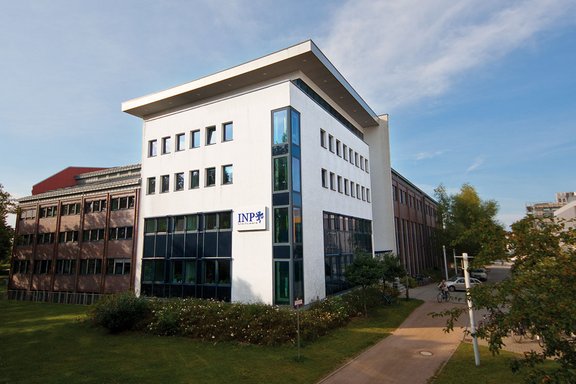
Dr. Angela Kruth
Dr. Angela Kruth with a material scientist background has a long-term experience in developing nanomaterials for energy applications with an application-orientated approach. After obtaining a Chemistry degree from University of Greifswald, Germany, her PhD Thesis in 1999 under Supervision of Prof. Anthony R. West at University of Aberdeen, UK, was on the topic of synthesis and structural and electrochemical characterisation of a new MIEC non-stroichiometric perovskite solid solution, Ca2-zMn2-xNbxO6-y for application as electrode materials in SOFC and gas sensors.
At University of St Andrews, UK, under supervision of Prof. John T. S. Irvine she developed a BaCe0.9Y0.1O3-y proton conducting perovskite membrane for enhancement of Haber-Bosch synthesis of ammonia within the frame of a EPRC project as well a perovskite membrane-based high temperature steam electrolyseur and new Sc-/Y-doped ZrO2 oxide ion conductors for SOFC. From 2005, the focus of work shifted towards development of a ceramic co-catalyst and support in polymer exchange membrane fuel cells for direct utilization of methanol as a fuel, followed by a proof-of-concept and technology transfer supported by a Royal Society of Edinburgh Scottish Enterprise Fellowship.
From 2010, she is project leader at the INP in Greifswald focussing on the development of plasma-enhanced thin film and nanoparticle deposition processes that enable the economic large-scale synthesis of energy materials. Since 2019, she Head of the INP research group Materials for Energy and speaker and coordinator of the CAMPFIRE Alliance - a partner network of industry and research institutes within the Region North-East in Germany that is developing new technological routes to establish green ammonia as a carbon-free fuel and energy carrier.
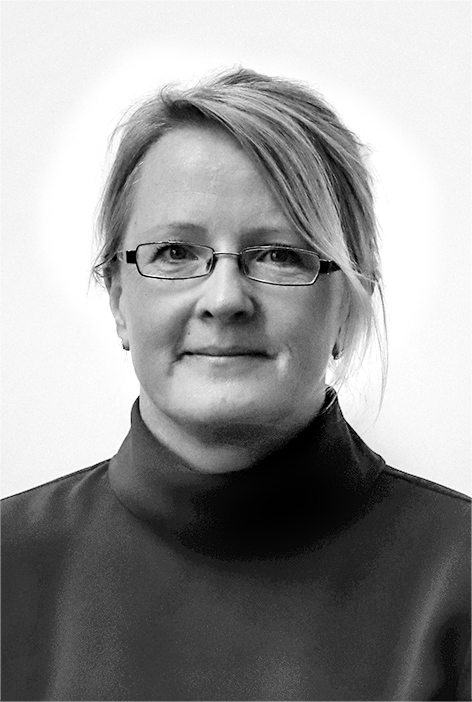
Role in HiPowAR
INP will carry out a screening of MIEC materials and selection of suitable candidates for plasma-enhanced deposition of complex metal oxide thin layer, in collaboration with IKTS. INP will then apply and develop a combined approach of physical vapour deposition and selective laser annealing as a new enabling platform for transformative research and development of high performance thin layer MIEC electrolytes, with precisely tuned compositions and optimised crystallographic and electrical properties. INP will also carry out routine structural characterization and performance tests of thin layer membrane on porous support as part of process parameter optimization as well as post-mortem investigations into degradation under operating conditions.
As the coordinator, INP will be in charge of the project management as well as the dissemination/exploitation and communication work package. INP has coordinated and managed large-scale national and international projects and coordinated PlasmaShape (FP7, no. 316216). INP will support the project in its aim to exploit its research results to technologies for the use in industry. To support this, a patent manager serves all issues regarding intellectual property and inventions (patents, utility models, trademarks) in close cooperation with external patent law offices. In the area of public relations INP is experienced in distributing press releases, communicating with journalists, organizing events and designing INPs print and online contents, for instance promotional material, the project website, and social media channels.
- S. Fleischmann, M. Zeiger, A. Quade, A. Kruth, V. Presser, Atomic layer deposited molybdenum oxide/carbon nanotube hybrid electrodes: Influence of crystal structure on lithium-ion capacitor performance, ACS Applied Materials & Interfaces (2018) 10, 22
- A. Kruth, Justus-Liebig-Universität Giessen LaMa-Kolloquium, April 2018: Invited Speaker Plasma-enhanced Synthesis of Nanomaterials for Future Energy Technologies
- V. Stranak, R. Bogdanowicz, P. Sezemsky, H. Wulff, A. Kruth, M. J.Smietana, J. Kratochvill, M.Cada, Z. Hubicka, Towards high quality ITO coatings: the impact of nitrogen admixture in HiPIMS discharges, Surface and Coatings Technology 2017, 335, 126-133
- K. Azad, A. Kruth, J. T. S. Irvine, “Influence of Atmosphere on Redox Structure of BaCe0.9Y0.1O2.95 – Inside from a Neutron Diffraction Study”, Int. Journal of Hydrogen Energy, 08 (2014) 39(24), 12804–12811.
- A. Thursfield, I. S. Metcalfe, A. Kruth and J.T.S. Irvine, “Defect Chemistry and Transport in Metal Oxides”, Metal Oxides – Chemistry and Applications, ed. by J.L.G. Fierro, 2005, 55-85.
- J.T.I. Irvine, A. Kruth, C. D. Savaniu, S. Tao, granted patent “Steam Electrolyser”, 2005, WO2005093130, US 8262896, US 7906006, CA 62561852
- A. Kruth and A. R. West, “Electrical properties of the oxygen-deficient perovskite series, Ca2Mn2-xNbxOy, 0 < x < 1.2, with Mn valency varying from +2.0 to +4.0”, J. Mater. Chem, 11 (2001), 153
The hydrogen and fuel cell center ZBT GmbH
The hydrogen and fuel cell center "Zentrum für BrennstoffzellenTechnik" (ZBT GmbH) founded in 2001 is supporting industry to speed up the market introduction of fuel cells and hydrogen technologies.
ZBT employees an interdisciplinary team of almost 100 qualified personnel, most having many years of experience in the field of research and development. Their extensive expertise and the outstanding infrastructure are incorporated in numerous co-operative ventures with industrial companies and research partners. Projects and services of ZBT cover a wide range from the development of reformers, fuel cell stacks and completely serviceable systems, the testing of production and manufacturing technologies for cell components and whole fuel cell stacks through to the testing of market-based developments with a view to licensing.
Among other things ZBT worked in the project “Toplaterne”, which was a sub venture of the lighthouse project e4ships (funded by Federal Republic of Germany), and was also involved in the ”E-Binnenschiff” project, funded by North Rhine Westphalia. In that frame ZBT developed several Excel based tools for calculation of specific fuel emissions, life cycle assessment and efficiencies of energy chains for maritime and inland ship applications.
ZBT is a non profit limited company (GmbH), CEO is Prof. Dr. Angelika Heinzel. Share holder is the University Duisburg-Essen.
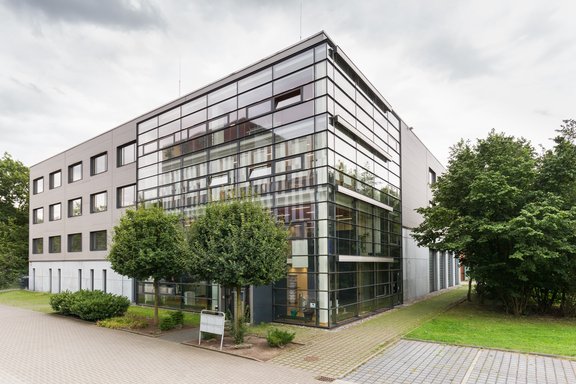
Jens Wartmann
More than 20 years of experience in the economic and thermodynamic analysis of advanced energy processes, with a special focus on hydrogen and fuel cell technology. As department leader of the microsystems and fluid mechanics he responsible for 14 scientists that work in this field at ZBT.
This research covers the development of laser method of in operando measurement of fluid flows in fuel cells. The material development of novel material and bipolar concepts for mobile (bike, aircrafts, passenger vehicles, portable hybrid fuel systems) as well as the development of complete micro fuel systems. The scientific results of his were transferred into SME networks (ZIM Innovationsnetzwerk, BISNET “ Brennstoffzellen in Serie”) to commercials the results. The network were managed be himself with 20 involved SMEs in three different product streams . His current task is the strategic management of the campfire (a green ammonia to power for maritime applications) project in Germany.
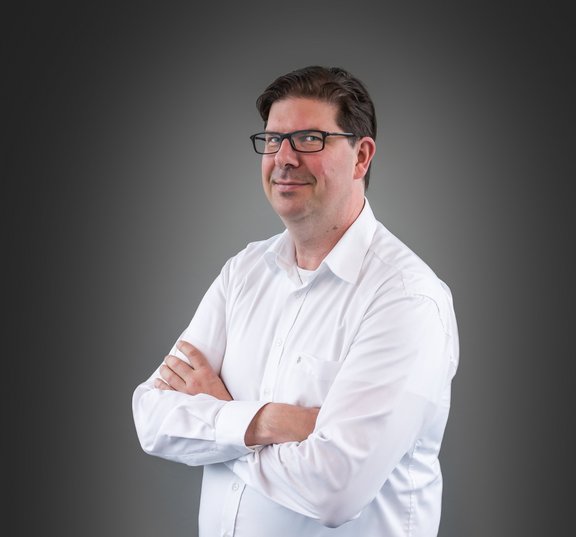
Role in HiPowAR
The main task of ZBT is to assess the energy efficiency, the environmental impacts and the competitiveness of the HiPowAR system. A cost estimation will be first performed using the results of the simulation, the cost estimation of all the HiPowAR devices and the estimation of lifetime and recycling costs of each element.
The ZBT is also responsible for the electricity generation costs calculation for the HiPowAR system and for the other conventional systems working either with natural gas or with ammonia. ZBT will also study the environmental and economic impact of HiPowAR in Europa by considering several possible applications such as: decentralized energy supply, marine, railway and aviation, the environmental impact will be evaluated in terms of emission reduction (PM, Nox, CO2) and in term of reduction of the production of fossil fuels. A roadmap of the business development of the HiPowAR systems will be established by ZBT.
Additionally, ZBT will contribute to the modelling and simulation work for the baseline assessment of power plant concepts and benchmark definition and also for the development of optimized configurations.
Politecnico di Milano (POLIMI)
Politecnico di Milano (POLIMI) is a scientific-technological university which trains engineers, architects and industrial designers. It is the largest technical university in Italy, focused on the quality and innovation of teaching and research, developing a fruitful relationship with business and productive world by means of experimental research and technological transfer.
The Politecnico is consistently in the top 10 European universities, according to QS Ranking, in 7 research areas spanning from Architecture & Built Environment to Computer Science & Information Systems; Civil & Structural Engineering; Chemical Engineering; Electronic Engineering; Mechanical, Aeronautical & Manufacturing Engineering. Research constitutes a parallel path to that formed by cooperation and alliances with the industrial system, in many cases favored by Fondazione Politecnico and by consortiums to which Politecnico belongs, allowing the university to follow the vocation of the territories in which it operates and to be a stimulus for their development.
Politecnico takes part in several international research and training projects collaborating with a world network of leading technical universities and research centers. The Department of Energy, in particular, studies disciplines and technologies relating to the production, conversion, transport and use of energy, in terms of a complete social and environmental sustainability.
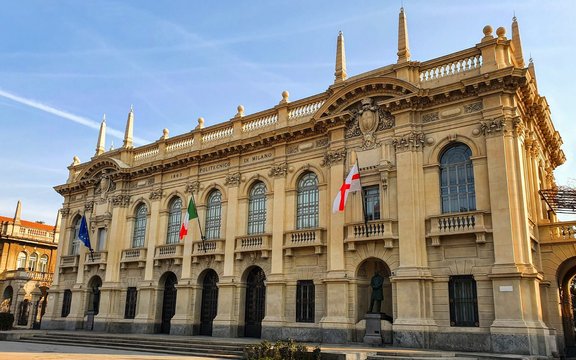
Prof. Stefano Campanari
Prof. Stefano Campanari holds a degree in Mechanical Engineering and a PhD in Energy Sciences, obtained in 1999 at Politecnico di Milano, Italy. He has been associate professor of Energy Systems at the School of Industrial Engineering of Politecnico di Milano since 2006, where he became Full Professor in 2018. His main research activities are related to advanced power cycles, hydrogen production, fuel cells and CO2 capture, as well as to distributed cogeneration power plants.
Author of over 150 publications on international journals and congresses, with H-Index 30, and three books related to the research activity. Scientific responsible of the Lab of Micro-Cogeneration and Energy Conversion at the Department of Energy at POLIMI, he has been recipient of six international best paper awards at ASME Turbo Expo, where he is member of the IGTI committees “Cycle Innovation” and “Industrial & Cogeneration”. Editorial board member of the Journal ‘Applied Energy’ (Elsevier Science).
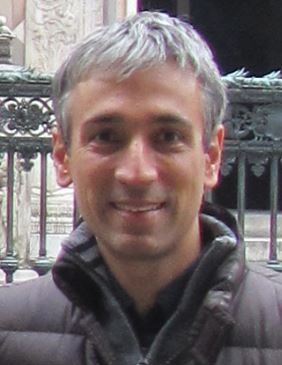
Role in HiPowAR
POLIMI role is mainly related to devloping the modelling, simulation and optimization of the HiPowAR system layout, in view of possible application in stationary and mobile uses and the assessment of system energy efficiency. The activity involves the development and application of specific simulation tools for the system key components (e.g. MIEC, oxidation chamber – validated based on experimental results for the MIEC and from the test rig for internal pressurized NH3 combustion -, expander, condenser and separators, air feeding system, auxiliaries) and for the plant layout, which is simulated at full and part-load, in view of efficiency and cost optimization.
POLIMI will then develop a set of optimized configurations of the power unit in view of its implementation for full scale units, focusing both on stationary applications (e.g. MW-scale or above) as well as on mobile applications (100 kW-scale and 400 kW-scale), and define the economic framework for the HiPowar plant, with a preliminary estimation of its economic performance indicators (including total plant specific cost, cost of electricity generation).
- Chiesa P., Romano M.C., Spallina V., Turi D.M., Mancuso L. “Efficient low CO2 emissions power generation by mixed conducting membranes”, Energy Procedia 37, p. 905-913, doi:10.1016/j.egypro.2013.05.185, 2013.
- Campanari, S., Mastropasqua, L., Gazzani, M., Chiesa, P., Romano, M.C. “Predicting the ultimate potential of natural gas SOFC power cycles with CO2 capture - Part A: Methodology and reference cases”, J. of Power Sources, vol. 325, pp. 598-614, 2016, http://dx.doi.org/10.1016/j.jpowsour.2016.05.104.
- S. Campanari, G. Guandalini, J. Coolegem, J. ten Have, P. Hayes, A. H. Pichel “Modeling, development and testing of a 2 MW PEM fuel cell plant fueled with hydrogen from a chlor-alkali industry”, J. of Electrochemical Energy Conversion and Storage (JEECS), doi 10.1115/1.4042923, 2019
Fraunhofer Institute for Ceramic Technologies and Systems
Fraunhofer is Europe’s largest application-oriented research organization with 74 institutes and more than 28,000 scientists and engineers. The Fraunhofer Institute for Ceramic Technologies and Systems located in Dresden and Hermsdorf covers the complete field of advanced ceramics.
Fraunhofer IKTS develops concepts for product and process innovations in numerous trendsetting industry sectors. The section Environmental and Process Engineering represents one of the biggest European research groups in the field of ceramic membranes. Ceramic membranes, filters, adsorbents and catalysts from Fraunhofer IKTS play an integral role in gas processing and water treatment processes. The Fraunhofer IKTS participates mainly with its department HTSC (High-Temperature Separation and Catalysis) dealing typically with development of MIEC (Mixed Ionic Electronic Condcutors) membranes for O2 and H2 separation, oxygen storage materials (OSM) and mixed oxide catalysts for heterogeneous catalysis.
HTSC works along the whole chain from powder synthesis along ceramic shaping, characterization and simulation up to building up of demonstration plants. Presently, department HTSC deals especially with application of MIEC membrane plants for energy saving and CO2 capture in combustion processes. As a result of these activities, pressurized combustion of carbon-free fuels in a membrane reactor was identified as promising route for more efficient power production.
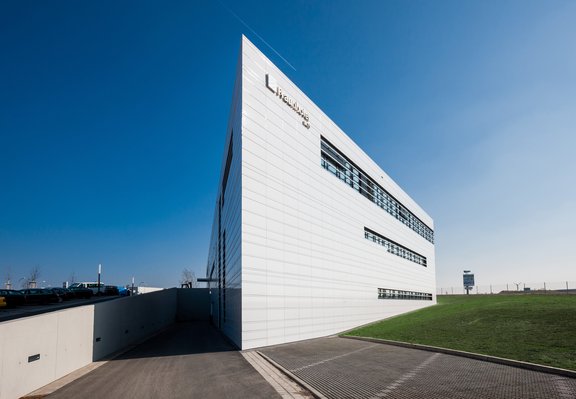
Dr. Ralf Kriegel
Dr. Ralf Kriegel (male) will have the project lead at Fraunhofer IKTS. He is working on mixed conducting materials since 1990, at first about material synthesis, oxide ion diffusion, chemical expansion and oxygen permeation. Presently, membrane production, process development and basic design of membrane plants are in the focus of his work.
He joined the institute in 2006 and becomes the leader of the group “Mixed conductors and catalysis” two years later. Together with his associates, he was awarded for the proof of concept of “Ceramic Membranes for Oxygen Production” by the Thuringian Research Award 2010 for Applied Research.
Since 2014, he is leading the department HTSC dealing mainly with ceramic adsorbents for gases, mixed conducting membranes and catalysts for heterogeneous gas reactions and combinations thereof inside membrane reactors. His approach of a self-pressurizing of combustion gases using „solid oxygen“ opens two routes for a more efficient energy conversion. The route based on a membrane reactor is used for the HiPowAR concept of pressurized ammonia combustion.
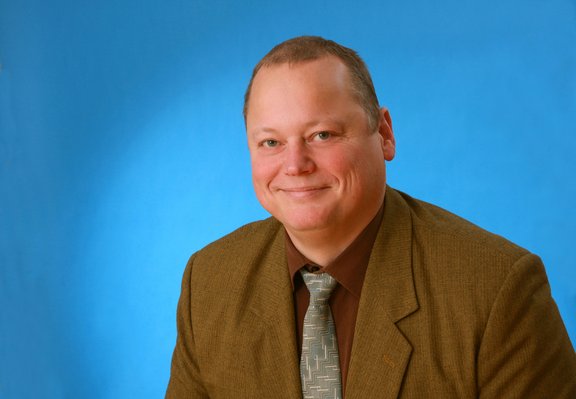
Role in HiPowAR
Within HiPowAR, Fraunhofer IKTS is responsible for the development of the concept of a membrane reactor suited for a combustion of ammonia under high pressure directly at an O2 delivering ceramic membrane. Furthermore, Fraunhofer IKTS will also develop and manufacture the MIEC (Mixed Ionic Electronic Conductor) membranes needed for the membrane reactor. Latter one will be equipped with at least 1000 MIEC membrane tubes. Besides, the whole test rig consisting of the membrane reactor, the fuel pump, heat exchanger, the recirulation circle and the gas expander will be erected at Fraunhofer IKTS by partner PBS Brno. Accordingly, testing will be also conducted for different membranes by the employees of IKTS.
- Kriegel, R.: Highly-efficient energy conversion by internal combustion under pressure in a membrane reactor. Campfire Workshop „Energiewandlung auf der Basis elektrokeramischer Dünnschichten“, 27. 02. 2020, Greifswald
- Kriegel, R.: Self pressurizing combustion for a more efficient energy production. Key Note Lecture, 15th Int. Conf. Inorgan. Membranes ICIM, 18 - 22. 06. 2018., Dresden
- Kühnert, J.-Th., Kriegel, R., Voigt, I.: Inorganic Membranes for sophisticated Separation Processes. Filtrieren und Separieren, Global Guide 2020-2022, S. 172 – 175
- Hoffmann, R., Pippardt, U., Kriegel, R.: Impact of sintering temperature on permeation and long-term development of support structure and stability for asymmetric oxygen transporting BSCF membranes. J. of Membr. Sc. 581 (2019), S. 270 - 282
- Hoffmann, R., Pippardt, U., Kriegel, R.: Impact of extrusion parameters on the mechanical performance of tubular BSCF-supports for asymmetric oxygen transporting membranes. J. of Membr. Sc. 570 - 571 (2019), S. 61 – 68
- Gaczynski, P., Böer, J., Harpf, A., Kircheisen, R., Kriegel, R., Becker, K.-D.: 57Fe Mössbauer study of (Ba0.5Sr0.5)(Co0.8Fe0.2)O3-δ. Solid State Ionics (2018), S. 59 - 65
Maston Renewable Energy Lab (AB)
Maston Group is at the forefront of developing and commercializing advanced renewable energy solutions, including solar-powered carbon capture, eFuel production, bioenergy, and energy storage technologies. Within Maston Group AB, the Maston Renewable Energy Laboratory (MREL) plays a crucial role as a product design and experimental prototype testing facility. MREL is equipped with cutting-edge prototyping manufacturing technologies and test rigs, enabling the rigorous evaluation and development of novel renewable energy technologies.
Maston Group’s commitment to innovation is demonstrated through its active participation in major European Union projects, such as the HEU project HYCORE (GA no. 101096789). By integrating advanced research with practical applications, Maston Group strives to push the boundaries of what is possible in the renewable energy sector, making significant contributions to the transition towards a sustainable, carbon-free future.

Stefan Mastonstråle
Mr. Stefan Mastonstråle, the visionary founder and owner of Maston Group, has over three decades of experience in renewable energy R&D. He has established Maston Group as a leader in pioneering technologies that address critical challenges in energy sustainability. Mr. Mastonstråle’s expertise spans corporate management, eco-design, advanced computer simulation, research management, and intellectual property development, all of which are instrumental in guiding the strategic direction and growth of Maston Group.
Beyond his role at Maston Group, Mr. Mastonstråle contributes his extensive knowledge to the renewable energy sector as a senior advisor and board member for various organizations. His commitment to innovation and sustainability is reflected in his guiding principle, "Do ut des" (I give, so can you), which underscores his dedication to sharing insights and fostering collaboration across the industry.

Role in HiPowAR
Maston Group plays a pivotal role in the HiPowAR project, focusing on the research and development of critical system components necessary for constructing an advanced membrane reactor as part of Work Package 2 (WP2). Maston Group's expertise in system design and prototyping will be instrumental in ensuring the successful integration and functionality of the membrane reactor, especially during on-site testing at Fraunhofer.
In addition to supporting the technical development of the reactor, Maston Group will oversee the implementation of programmable logic controllers (PLCs) to enhance system functionality. The company will also contribute to system simulation efforts under Work Package 5 (WP5) by providing essential data from the steam generator, which is critical for evaluating the overall system performance. Furthermore, Maston Group will actively engage in dissemination activities, sharing project outcomes with potential end-users to drive adoption and ensure the project's long-term impact.
RANOTOR AB
RANOTOR AB is founded by the former project leader of SAABS steam engine for vehicles. Reciprocating piston engine is a better type of expander than steam turbine when the power output is below 1000 kW. The project was ceased when the catalytic converter emerged but there has been an interest for the technology on and off for both stationary as well as mobile application.
Several project together with industry and universities has been carried out and the last years, RANOTOR has got costumers that want modern steam engines for WHR (Waste Heat Recovery) and there is strong interest for the steam engine to exploit different types of unrefined and cheap biofuel but also other fuel as hydrogen, hydrogen peroxide, iron powder and Concentrating Solar Power

Peter Platell
Mr. Peter Platell graduated in 1983 from KTH (Royal University of Technology Stockholm) with a Master of Science degree, majoring in Power and Heating. After graduating from KTH, Peter has worked as energy consultant, with automotive engines and building HVAC-systems. Peter has been a doctoral student at KTH and graduated a Technical Licentiate (PhD) degree 1993.
Peter has also published several R&D works regarding small-scale CHP, solar energy, ground couple heat pumps, Low Exergy HVAC systems and published several international papers. Over the past 15 years, Mr. Platell has primarily worked with the commercialisation of his research developments in his own companies.

Role in HiPowAR
Mr Platell is supervising RANOTOR companie‘s work in HiPowAr that involves to study how small-scale steam power embodied as a modern high tech steam engine will fit into the HiPowAr concept. Furthermore , RANOTOR’s compact steam generator concept might also offer attractive performance in HiPowAR concept.
- Displacement Expanders for Small-scale Cogeneration, Peter Platell, Licentiate thesis, KTH Department of Machine Design, Division of Engineering Design, 1993.
- EU project HEGEL Steam Generator to a Combi-cycle,, 2006
- A comparative study of the Carbon Dioxide Transcritical, Power Cycle compared with an Organic Rankine Cycle with R123 as working fluid in Waste Heat Recovery Y. Chen, P. Lundqvist, A. Johansson, P. Platell, Applied Thermal, Engineering, 2006
- Theoretical Research of Carbon Dioxide Power Cycle Application in Automobile Industry to Reduce Vehicle’s Fuel Consumption, Y. Chen, P. Lundqvist, P. Platell Applied Thermal Engineering 25 (2005),
- A mechanical model of an axial piston machine, Rasmus Löfstrand Grip,Licentiate thesis, Department of Machine Design, Royal Institute of Technology, 2009:16